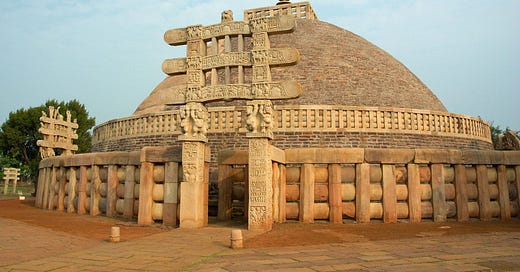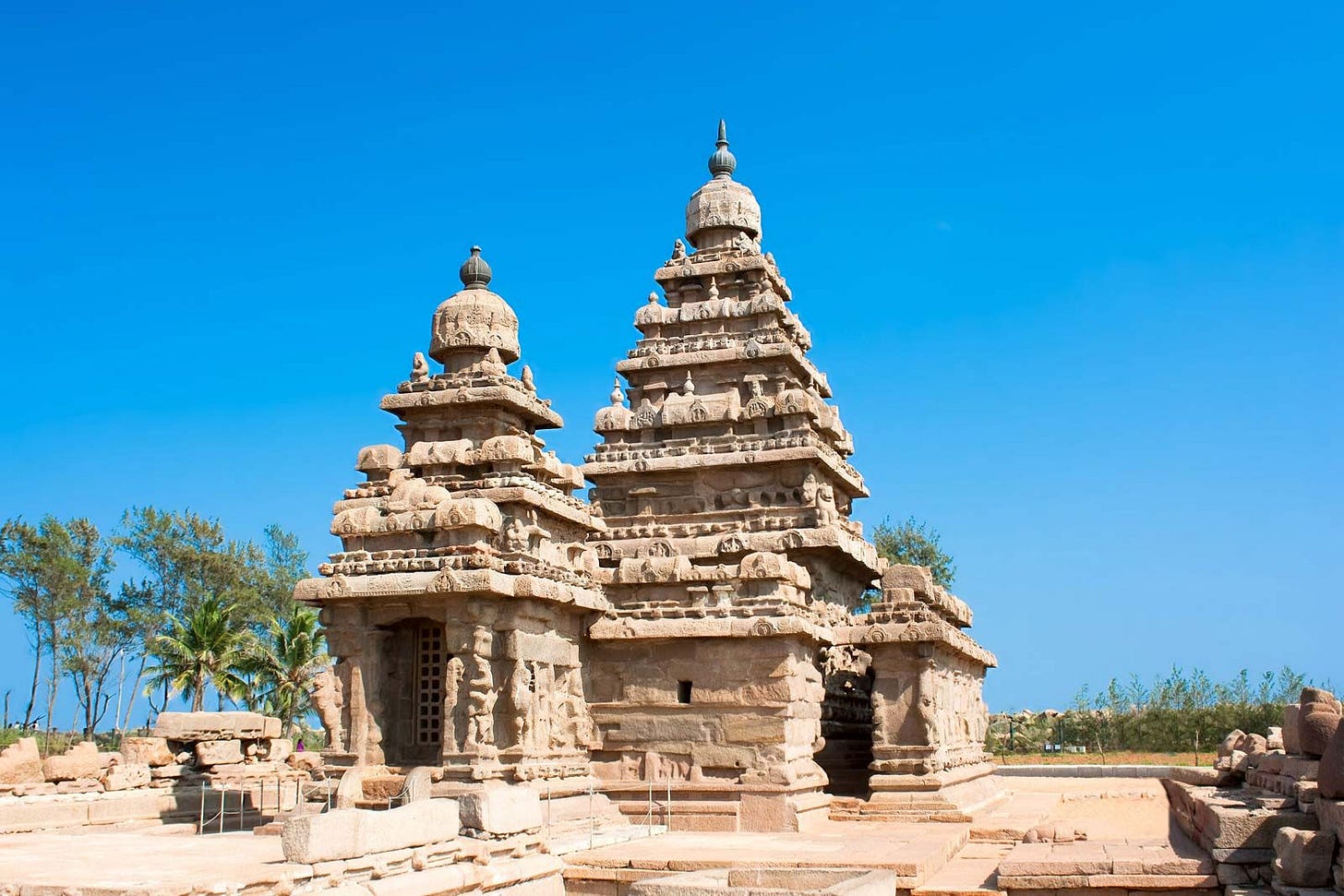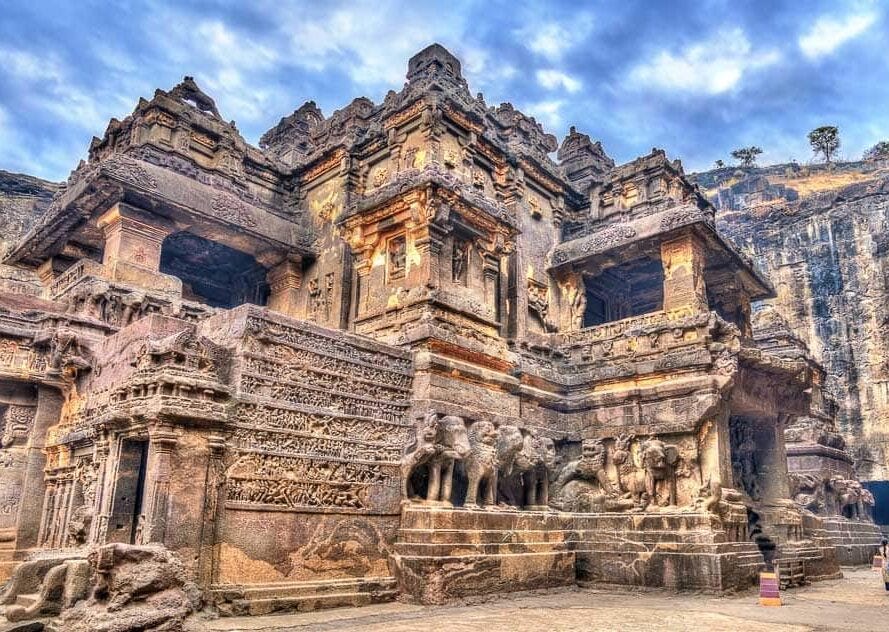Unveiling the Timeless Beauty: Ancient Indian Architecture from Stupas to Temples
"Dive into the architectural wonders of ancient India as we journey from serene stupas to intricate temples, tracing the evolution of a rich cultural heritage."
India's architectural heritage is a treasure trove of breathtaking structures that have fascinated and inspired people for centuries. From the awe-inspiring stupas to the intricate temples, Indian architecture stands as a testament to the country's rich history and cultural diversity.
In this article, we will embark on a journey through time and explore the evolution of ancient Indian architecture, from the humble beginnings of stupas to the grandeur of temples.
1. Stupas: The Beginning of Indian Architectural Marvels
Our journey into ancient Indian architecture begins with stupas. These massive, dome-shaped structures served as religious monuments and were primarily associated with Buddhism.
The most famous stupa is the Sanchi Stupa, which dates back to the 3rd century BCE. It features a simple, yet powerful design, with a hemispherical dome and a harmika, a square railing with four gateways.
Stupas were often adorned with intricate carvings, depicting stories from the life of Buddha and various other narratives.
These carvings were not just decorative; they also held spiritual significance, serving as a means for educating the masses about the Buddha's teachings.
2. Cave Architecture: Rock-Cut Marvels
As time progressed, ancient Indian architecture evolved to include rock-cut cave temples. The most renowned of these are the Ajanta and Ellora Caves, which date back to between the 2nd century BCE and the 8th century CE.
These caves showcase the mastery of Indian architects in transforming solid rock into stunning monasteries and temples.
The cave temples are known for their exquisite sculptures, paintings, and intricate architecture. They represent a fusion of various religious influences, including Buddhism, Hinduism, and Jainism.
The rock-cut architecture is a testament to the creativity and dedication of the artisans of ancient India.
3. Early Hindu Temples: Experimentation and Refinement
The transition from cave architecture to free-standing temples marked a significant turning point in Indian architectural history. The early Hindu temples, dating from the 4th to 7th centuries CE, were characterized by experimentation and diversity in design. The temples at Mahabalipuram, such as the Shore Temple, exemplify this period.
The Shore Temple, in particular, showcases the Pallava dynasty's experimentation with architectural forms.
These temples incorporated various elements like pyramidal superstructures, intricately carved pillars, and exquisite sculptures of deities, all set against the backdrop of the Bay of Bengal.
4. Nagara and Dravida Styles: The North-South Distinction
As we move forward in time, we encounter two distinct architectural styles that have become synonymous with northern and southern India. The Nagara and Dravida styles represent the architectural preferences and regional variations in the subcontinent.
Nagara Style: The Nagara style, prevalent in northern India, is characterized by tall, curvilinear spires known as shikharas.
The Khajuraho Group of Monuments, a UNESCO World Heritage Site, is a prime example of Nagara architecture. These temples, built between the 10th and 12th centuries, are renowned for their intricate erotic sculptures and impressive shikharas.
Dravida Style: In the southern part of India, the Dravida style developed. The Dravida temples are known for their towering gopurams (pyramidal entrance gateways) and massive enclosures.
The Brihadeeswarar Temple in Thanjavur is a magnificent example of Dravida architecture. This temple, built by Rajaraja I in the 11th century, features a colossal shikhara and intricate sculptures.
5. Iconography and Symbolism in Indian Temples
One of the most intriguing aspects of ancient Indian temple architecture is the intricate iconography and symbolism that adorn these structures. Each temple is a visual encyclopedia of religious and mythological narratives.
The carvings and sculptures depict deities, celestial beings, and epic stories, serving as a means of education for the illiterate masses and a source of spiritual inspiration.
For example, in the Khajuraho temples, the sculptures are a harmonious blend of sensuality and spirituality, celebrating the beauty of human form while imparting moral and ethical lessons.
At the Brihadeeswarar Temple, the colossal Nandi bull statue guards the entrance, signifying the vehicle of Lord Shiva and symbolizing strength and devotion.
6. The Art of Temple Construction: Ancient Engineering Marvels
Indian temple architecture is not just about aesthetics; it also demonstrates remarkable engineering achievements. The temples are constructed using a combination of stone blocks, without the use of mortar. The joints are so precise that they are nearly invisible, making the temples appear as if they were carved from a single colossal stone.
Additionally, the temples often feature innovative systems for water management, ventilation, and earthquake-resistant design.
The Kailasanatha Temple in Ellora, carved out of a single rock, is a testament to the technical mastery of ancient Indian architects.
7. Preservation and Conservation Efforts
In recent years, there has been a growing awareness of the need to preserve and protect India's ancient architectural marvels. Many temples and monuments have faced the challenges of weathering, pollution, and vandalism.
Both governmental and non-governmental organizations have taken up the responsibility of restoration and preservation.
Efforts such as restoring the Konark Sun Temple in Odisha, which suffered significant damage over the centuries, highlight the commitment to safeguarding India's cultural heritage.
8. The Timeless Legacy of Ancient Indian Architecture
In conclusion, ancient Indian architecture, from stupas to temples, is a testament to the nation's rich history and cultural diversity. It reflects the evolution of artistic, engineering, and spiritual aspects over the centuries.
The timeless legacy of these architectural wonders continues to inspire and captivate people from around the world.
As we explore these architectural marvels, we appreciate their aesthetic beauty and gain a deeper understanding of their spiritual and cultural significance.
Ancient Indian architecture stands as a bridge between the past and the present, connecting us to the roots of a civilization that has left an indelible mark on the world.
It is our duty to cherish and protect these architectural wonders, ensuring that they continue to be a source of wonder and inspiration for generations to come.
Join the Journey of Discovery
If you've enjoyed this exploration of ancient Indian architecture and are hungry for more wonders from the past, then consider subscribing to "Ancient Wonders." By subscribing, you'll unlock a world of historical, architectural, and cultural treasures, delivered right to your inbox.
Subscribing is not just about gaining access to more captivating content but also about becoming part of a community that celebrates the richness of human history. Our subscribers share a collective passion for the marvels of the ancient world, and you're invited to be a part of it.
Your subscription ensures that you never miss an article, and you'll be the first to know about exciting new content. Plus, it's an excellent way to show your support for our mission of preserving and sharing the incredible legacies of ancient civilizations.
In the spirit of sharing, we encourage you to spread the word about "Ancient Wonders" with your friends, family, and fellow history enthusiasts. Together, we can create a vibrant community of knowledge seekers who appreciate the enduring beauty and wisdom of our ancestors.
Thank you for being a part of our journey through time, and we look forward to sharing many more incredible stories and discoveries with you. Subscribe now, and let's embark on this thrilling adventure together.
Subscribe, engage, and share – because the wonders of the past are too magnificent to keep to yourself. Join us, and let's make history come alive.
"Interested in sponsoring 'Ancient Wonders'? Partner with us to reach a curious and engaged audience passionate about history, culture, and heritage. Let's bring your brand to the forefront of our exploration of the past. Contact us for exciting sponsorship opportunities!"






